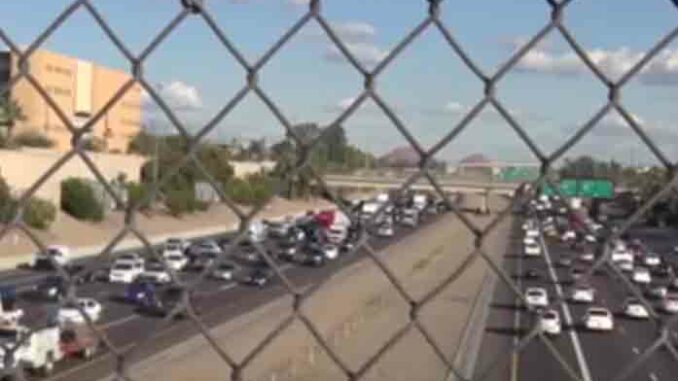
The March 7 public presentation of three alternative routes for the “Sonoran Corridor” linking I-10 and I-19 south of Raytheon and the airport showed the Arizona Dept. of Transportation’s continuing commitment to crony politics at the taxpayers’ expense. While a straight East-West road might make sense, and would cost much less, the chosen convoluted alternatives have a common thread not mentioned; that is the free access highway for the 3200-acre planned Diamond Ventures Swan Southlands/Verano development. Don Diamond is a major campaign contributor to friendly members of the Board of Supervisors.
The Sonoran Corridor was rejected by Pima County voters in the 2015 bond election. It gets worse.
The Federal Highway Administration and ADOT have a Memorandum Of Understanding in the works that gives all oversight for clean water, clean air, noise, wildlife, etc. required by the National Environmental Protection Act to…ADOT itself! It’s called a “NEPA Assignment.” The Tier 1 Environmental Impact process, in the final stages for both the Sonoran Corridor and Interstate 11, is exempted, but for Tier 2 — where a 2000′ corridor is narrowed down to 400′ with interchanges, etc. — will have no federal environmental oversight.
The Sonoran Corridor, now dubbed an “auxiliary interstate,” was originally shown on Pima County Administrator Charles Huckelberry’s planning maps as part of Interstate 11, linking to his proposed Avra Valley I-11 route, the expected “preferred alternative” in that ADOT-FHWA Tier 1 study. Public meetings were scheduled for February to announce their choice but have been postponed, probably until the NEPA Assignment is nailed down.
Opponents of the proposed I-11 Avra Valley route turned in over 3000 comments in 2017, a possible ADOT record, with 89% opposed and ½ of one percent in favor. ADOT convened “neutral” meetings of hand-picked stakeholders to try to reconcile the opposing forces. Participants instead called for improving I-10 and staying out of the Avra Valley. Improving I-10, by ADOT’s own math, would cost taxpayers nearly $2 billion less than a new Avra Valley highway. That has gone unreported – it wasn’t in ADOT’s media release.
Pima County Board of Supervisors Chair Richard Elias and District 3 Supervisor Sharon Bronson recently issued a letter reaffirming BOS policy, in Resolution 2007-343, that opposes any new highway and especially any Avra Valley route. The media missed that, too.
In addition to negative environmental impacts, and encroachment on the Tohono O’odham Nation, critics point out that existing jobs would be lost along the present I-10 corridor, tourism at Saguaro National Park, Desert Museum, Kitt Peak, and other attractions would be hurt, water quality threatened, and dozens of families evicted. The draft Avra Valley route goes right over a water co-op’s well. The “Business Case” for I-11 includes attracting U.S. corporations and jobs to…Mexico.
ADOT and FHWA are looking ahead in the event of political changes in 2020 and environmental re-regulation. ADOT would be exempt. The scam was confirmed by Federal Highway Administration spokesman Steven Olmsted who first said, “You will find I-11 listed in the MOU as one of the EIS exceptions and remains under FHWA NEPA.” True, but not quite. When challenged, Olmsted admitted: “If there were more actions in the future ADOT would manage all Tier II activity.”
Don’t put the fox in charge of the chicken coop! Retain federal oversight of the environmental threats that Interstate 11 and the Sonoran Corridor create. Even though funding and construction may be years away, decisions made now will impact generations to come, and can thwart the will of the voters in the next election.
To comment on the NEPA Assignment (March 13 deadline), go to: https://www.regulations.gov/document?D=FHWA-2018-0046-0001. Click on the comments button in the upper right. That link also brings up the MOU, and intrepid researchers will find the Tier 2 I-11 and Sonoran Corridor NEPA Assignment coverage on page 51 of Appendix A.
